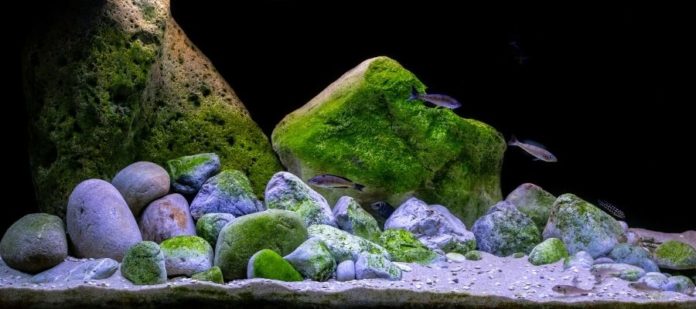Fish tank complications are unavoidable, whether your home aquarium is new or old. It’s crucial to know the root causes of these issues before you attempt to resolve them so that you don’t wind up making things worse. Continue reading to explore the most common fish tank problems and how to fix them.
White or Cloudy Water
Bacteria bloom is the leading cause of white, cloudy water in an aquarium. High ammonia levels in a fish tank play a significant role in triggering this bacteria bloom. Some of the other aspects that create cloudy water are overcleaning with chlorinated water, overfeeding, and using antibiotic medications.
To increase the oxygen level in the fish tank, use an air pump with air stones. Furthermore, you can use bacterial additives to reestablish or replenish beneficial bacteria that might have become depleted due to significant water changes and medications.
Green Water
Algae bloom is the leading cause of green water, especially if there’s excess light and algal nutrients such as phosphate and nitrate. There are many reasons why algae commonly grow in home aquariums, but aggressive algae growth shows a presence of organic nutrient buildup. This buildup can result from insufficient filtration and extra nutrients from secondary sources such as water and food.
Algaecide is an ideal solution, especially if you’re looking for immediate results. Also, you can use activated chemical or carbon resin media designed to remove excess organic compounds in your aquarium.
Ammonia Spikes
A severe reduction in nitrifying bacteria is the most prevalent cause of recurrent ammonia surges. According to research, these bacteria are essential in the nitrogen cycle, which breaks down ammonia. Some recent research also links these surges to newly built systems, mainly when you introduce too many fish at once. Ammonia spikes can also develop in a mature aquarium when the owner replaces bio-media or gravel substrate.
You must use the correct amount of bacteria supplements to replace healthy bacteria. You may do this after cleaning the tank or installing a new system.
White, Fuzzy Clumps on Fish Tank Substrate
Overfeeding can lead to the accumulation of uneaten fish food in the aquarium. Excess food acts as a breeding ground for fungus and mold. The presence of fungus and mold is an indication of poor water quality.
Using a test kit to measure water quality and eliminate pollutants is essential. You can also use automatic feeders to automatically program feeding times and remove any uneaten food.
Pay special attention to these most common fish tank problems and how to fix them. Chances are, you’ll come across at least one of these issues in your time operating an aquarium. The more quickly you act, the better off your fish will be.






















